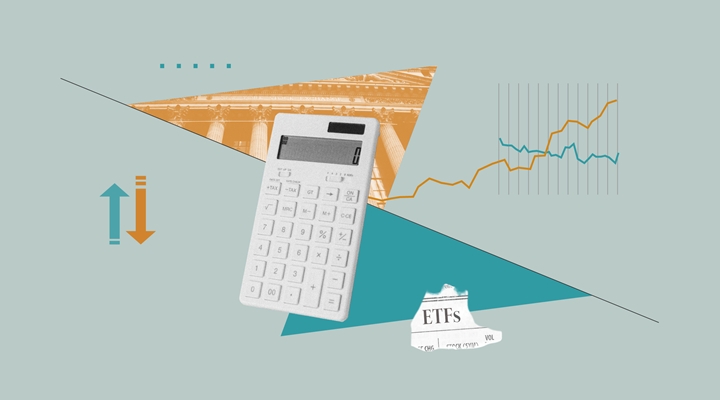A Word About REITs
Most real-estate funds and ETFs invest not in corporations which own real-estate but rather real estate investment trusts, or REITs. The REIT legal structure benefits from a special tax designation for corporations first created in the U.S. in the 1960s. Their tax status drastically reduces the taxes they pay on their real estate investments. Without REIT status, a corporation which owned income-producing real estate would have to pay corporate taxes on the income received, and shareholders of the corporation would be liable for taxes on the dividends paid out from that income. The primary advantage of the REIT structure is that real estate income is not taxed at the corporate level, so more of the firm’s earnings can be passed down to shareholders. Only at the shareholder level are those dividends ultimately taxed—typically at ordinary income rates. To qualify for this tax treatment, a REIT must earn almost all of its income through real estate, and must pay out 90% of its earnings in the form of dividends. However, retained earnings remain subject to corporate taxation. Several European countries have adopted similar provisions, including the UK, France, the Netherlands, Belgium, Finland, Italy and Germany.
Indices
The largest real estate ETFs currently available in Europe track the performance of an index from one of three main series of real estate indices available. There are also a handful of smaller ETFs which follow three additional niche indices. Each of the indices is weighted by free-float adjusted market capitalisation, and components are screened for minimum size and liquidity requirements.
The returns on the European FTSE and STOXX real-estate indices have been highly correlated (0.98) for the past decade, and have achieved similar returns (a difference of 0.6% annually). However, the various regional MSCI real-estate indices have trailed the returns on their counterparts from FTSE and STOXX despite sharing many of the same component securities, particularly on the European indices. For instance, commercial property giant Unibail Rodamco is the largest constituent of all the European real estate indices, representing between 15% (FTSE EPRA) and 28% (MSCI) of these indices’ value, followed by two British entities, British Land Co PLC and Land Securities Group PLC, each accounting for 6-12% of the indices' value. The greater performance of both the FTSE and STOXX indices relative to the MSCI indices can be attributed in part to their inclusion of smaller, faster growing companies, as the MSCI indices do not include small-caps, and generally include fewer mid-caps, as they are limited to companies in the top 85% of market capitalisation of their home nation, while the STOXX indices include companies in the top 95% of market capitalisation and FTSE has no such restriction.

Both iShares and EasyETF offer products which track the aforementioned FTSE EPRA/NAREIT series of indices, which include the greatest exposure to small-cap firms of the three main real estate index providers. The indices are divided by country or region, including the U.S., UK, Europe, Europe ex-UK and the Eurozone (French companies account for more than half of the value of the Europe, Europe ex-UK and Eurozone indices by value), along with a global index. It is also important to note that the some of these ETFs include not only equities in the form of REITs, but also closed-end funds which directly own property. While the ETF should not trade at a great premium or discount to net asset value (NAV), the closed-end funds which are constituents of some of the benchmark indices may themselves trade at a premium or discount to NAV. This premium or discount to the underlying NAV would not be apparent in the ETFs' price. The U.S. and UK ETFs track dividend indices, which only include shares that yield 2% or greater. As of this writing, the iShares FTSE/EPRA U.S. Property ETF (IDUP) and the iShares FTSE/EPRA UK Property ETF (IUKP) have dividend yields of 2.75% and 3%, respectively, trailing the EasyETF Eurozone ETF (EEE) which yields 3.5%.
Lyxor's real-estate ETFs track the performance of the MSCI series of real estate indices, including those focused on the three largest regional markets: Europe (with a large concentration in France and the UK), the U.S., and Asia ex-Japan (more than half this index’s value is comprised of companies based in Hong Kong). There is also a global MSCI product, where about 60% of the market-cap is comprised of REITs, with the remaining 40% comprised of real estate development firms.
Both the ComStage STOXX Europe 600 Real Estate ETF (C074) and the iShares STOXX Europe 600 Real Estate ETF (EXI5) track the performance of the STOXX Europe 600 Real Estate Cap Index, which consists of 21 European real estate companies. Individual components are capped at a maximum of 20% of the total index value. More than half of the value of the index comes from companies based in either France or the U.K. iShares also has similar ETFs which track the performance of STOXX indices of U.S. and Asian (mostly Australia, Hong Kong and Japan) real estate companies.
The Amundi Real Estate REIT ETF (C8R) tracks the performance of the Euronext IEIF REIT Europe index, which currently consists of 25 European REITS. Individual components are capped at a maximum of 15% of the index’s total value.
Based on the current valuations for these ETFs, European property appears to be undervalued relative to property in other developed nations. Current price-to-book ratios for ETFs tracking European real-estate markets range between 0.95 and 1.09. This is a lower range than those for those ETFs tracking either the U.S or Asian real-estate markets, and in-line with the European average of the past ten years. At around 6.0-6.5, the price-to-earnings ratios also compare favourably to the double-digit ratios present in the U.S. and Asian markets, and are substantially lower than the ten-year average of 13 times. Those ETFs offering U.S. real estate exposure appear to offer the least value at the moment. This bunch currently sports price-to-book ratios in excess of 2, and price-to-earnings ratios of greater than 20
Small Single-Country ETFs
The HQ Fastighet ETF (SE00033932) tracks the performance of the HQ OMX Fastighet index, which comprises the largest and most liquid real estate companies traded on the NASDAQ OMX Stockholm Exchange. Individual components are capped at a maximum of 15% of the total index value.
UBS offers an ETF which invests exclusively in Swiss real estate funds, which in turn own physical real estate. The fund (which has two separate share classes: one institutional, one retail) tracks the performance of the SXI Real Estate index. Residential properties make up about 54% of the weight of the index, with commercial properties accounting for 30% and the remainder comprised of mixed and specialty properties.

Many property owners may not have the appetite for another investment in real estate after the wild ride of the past few years. Current valuations don't indicate that it's time for investors to dive head first back into real estate, so despite the diversification benefits that the asset class exhibited in the pre-crisis period and superior liquidity of real estate ETFs versus either direct investments in property or funds, investors may wish to wait for better valuations before dipping their toes back into the real-estate pool.
























